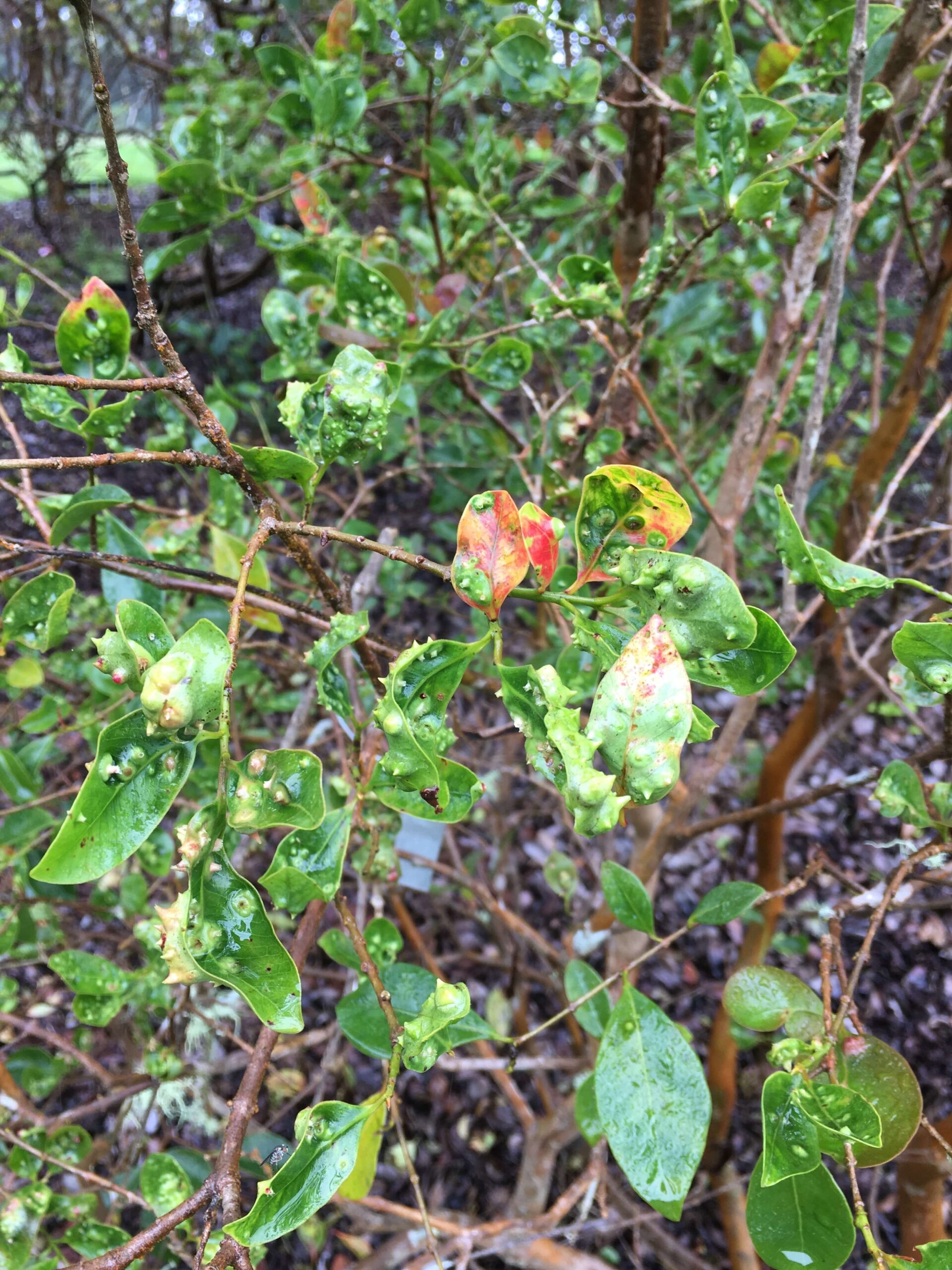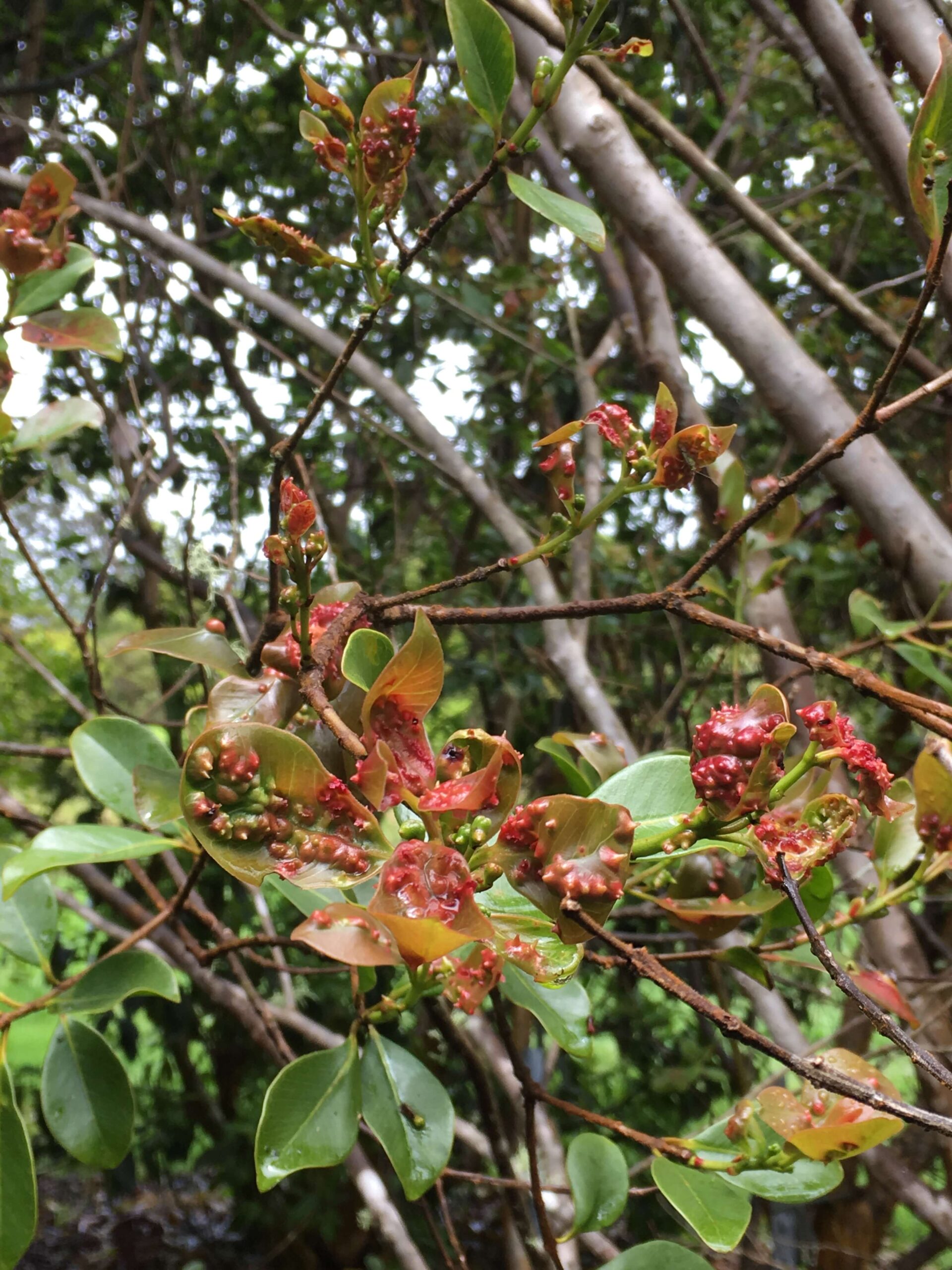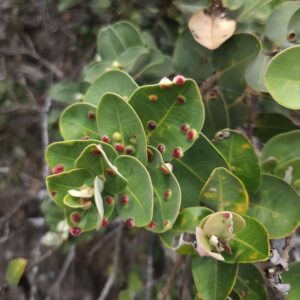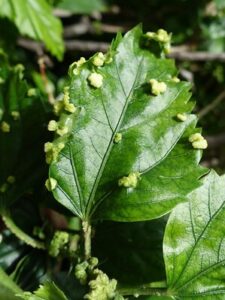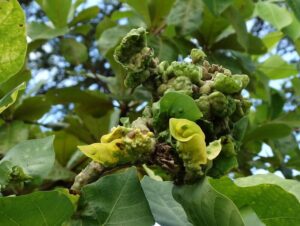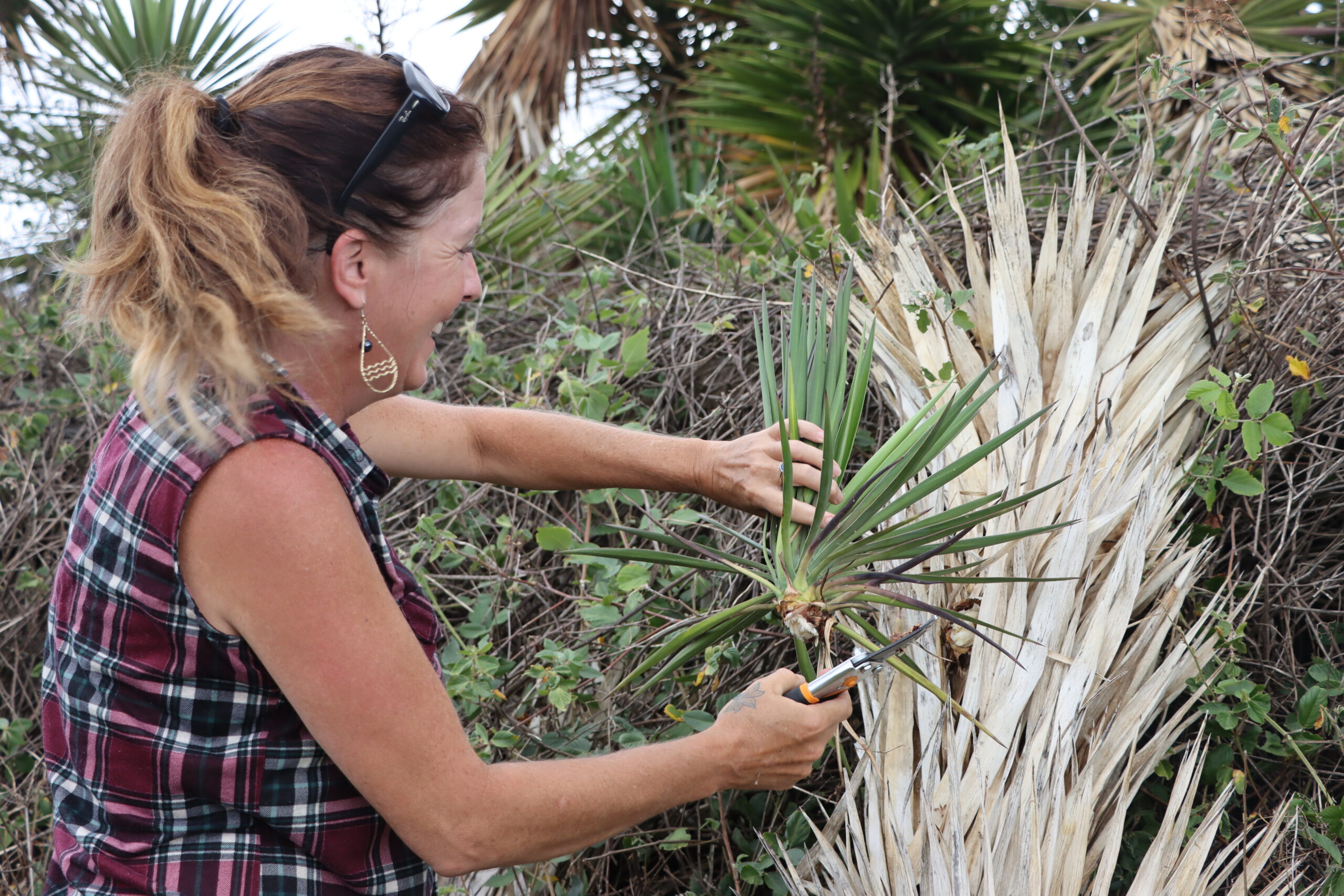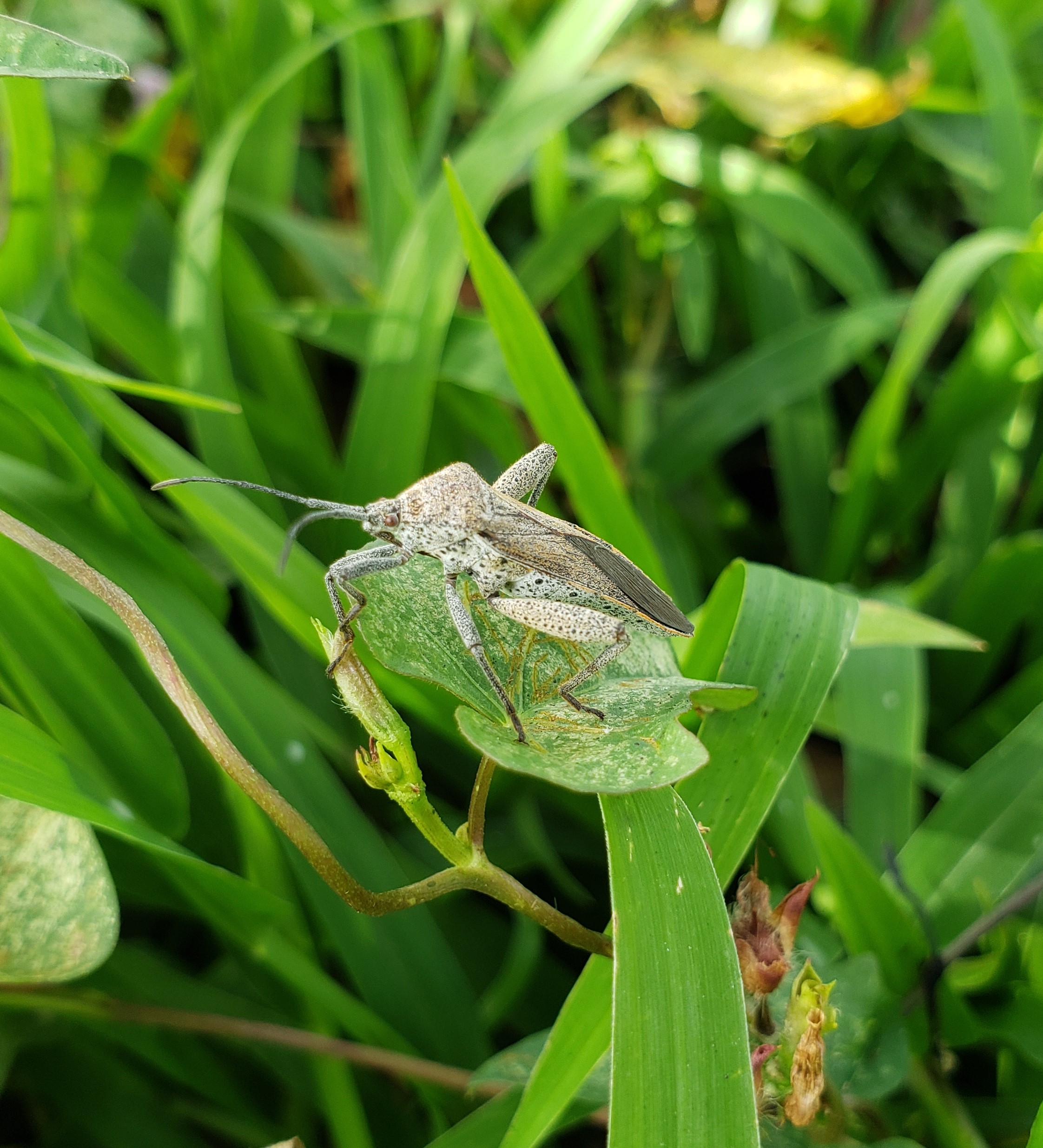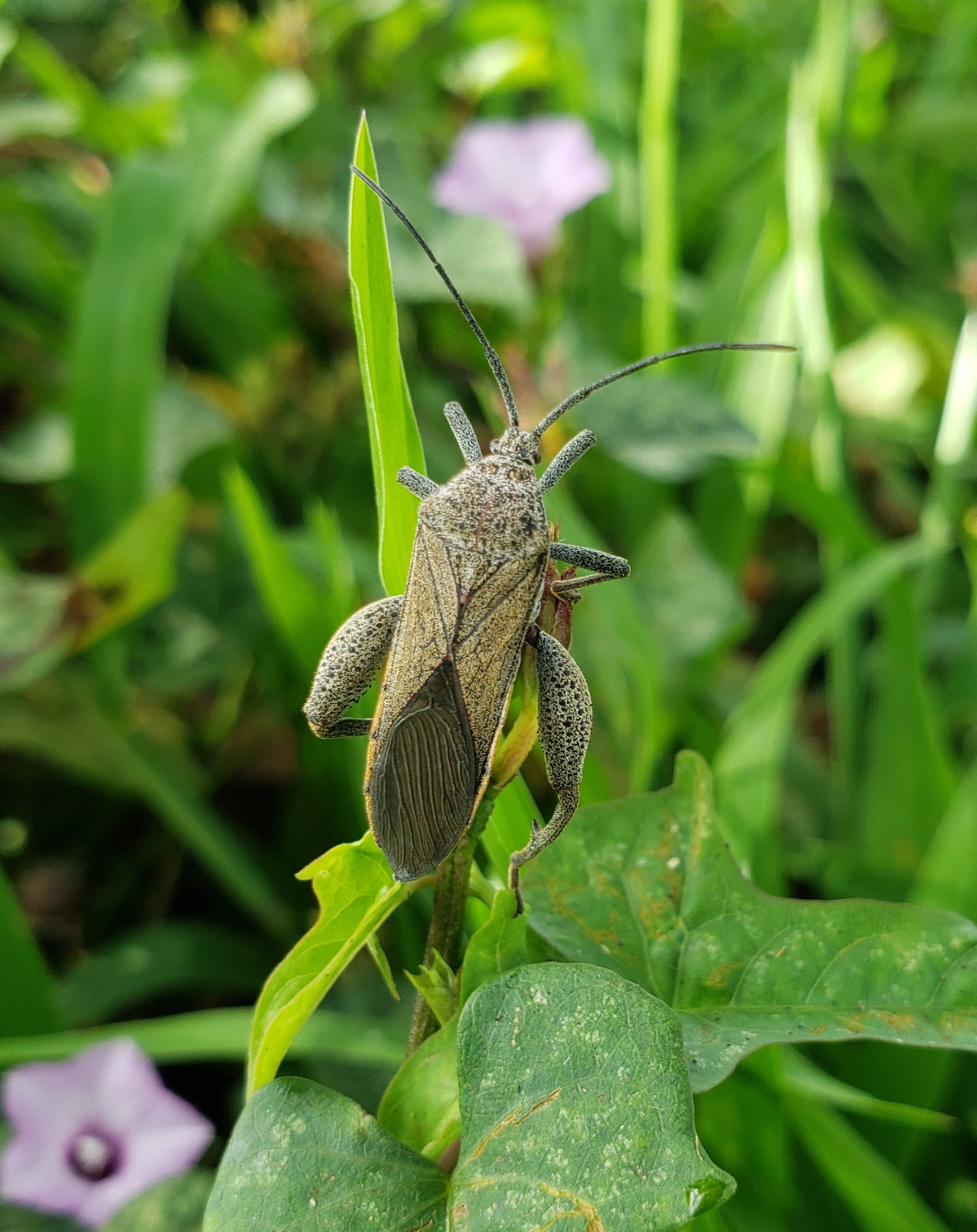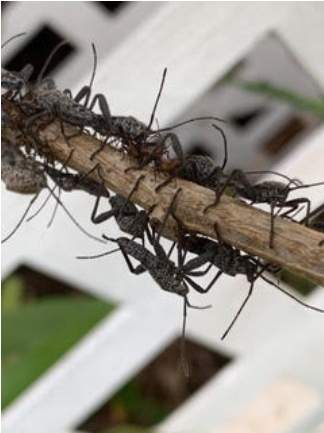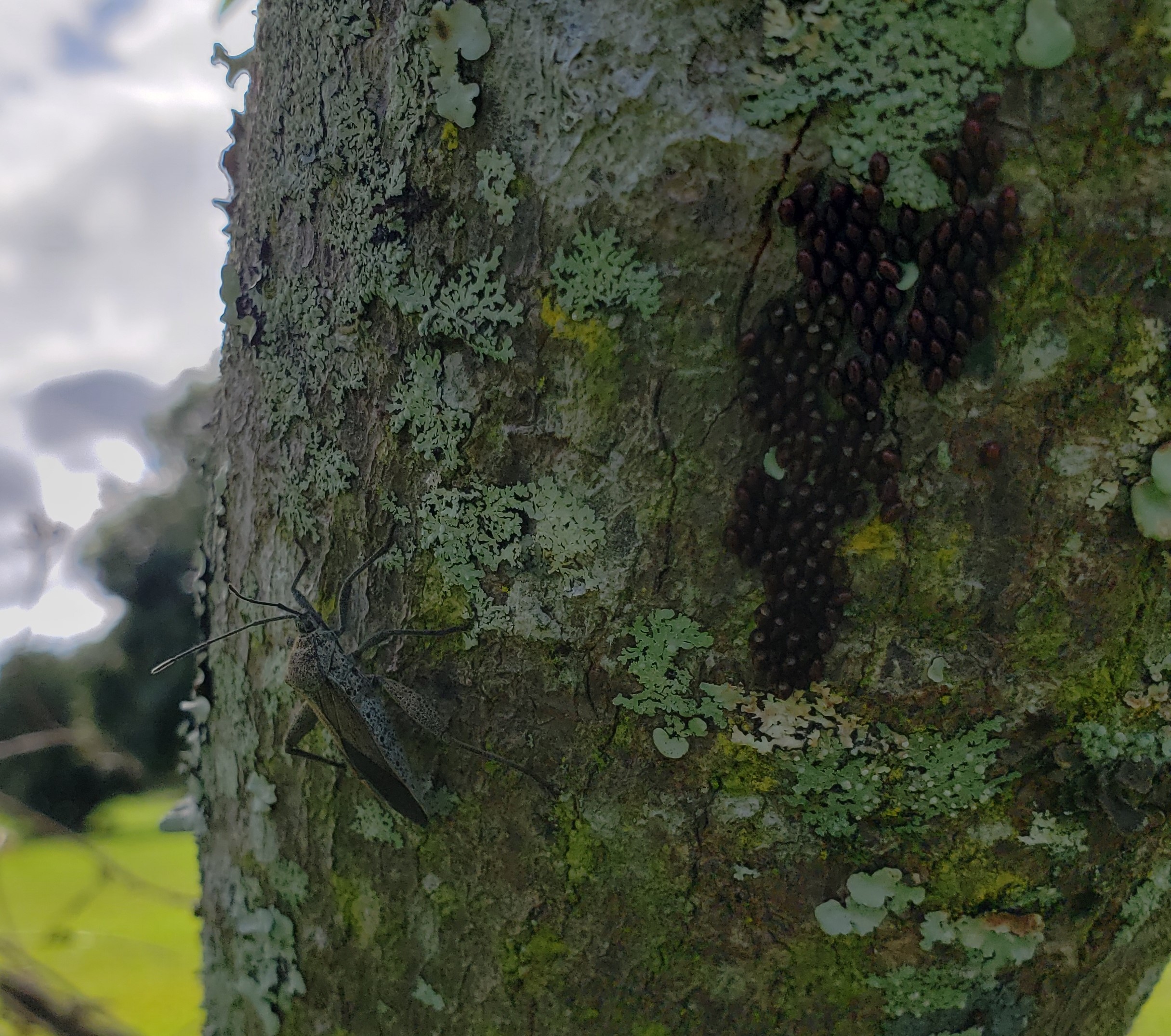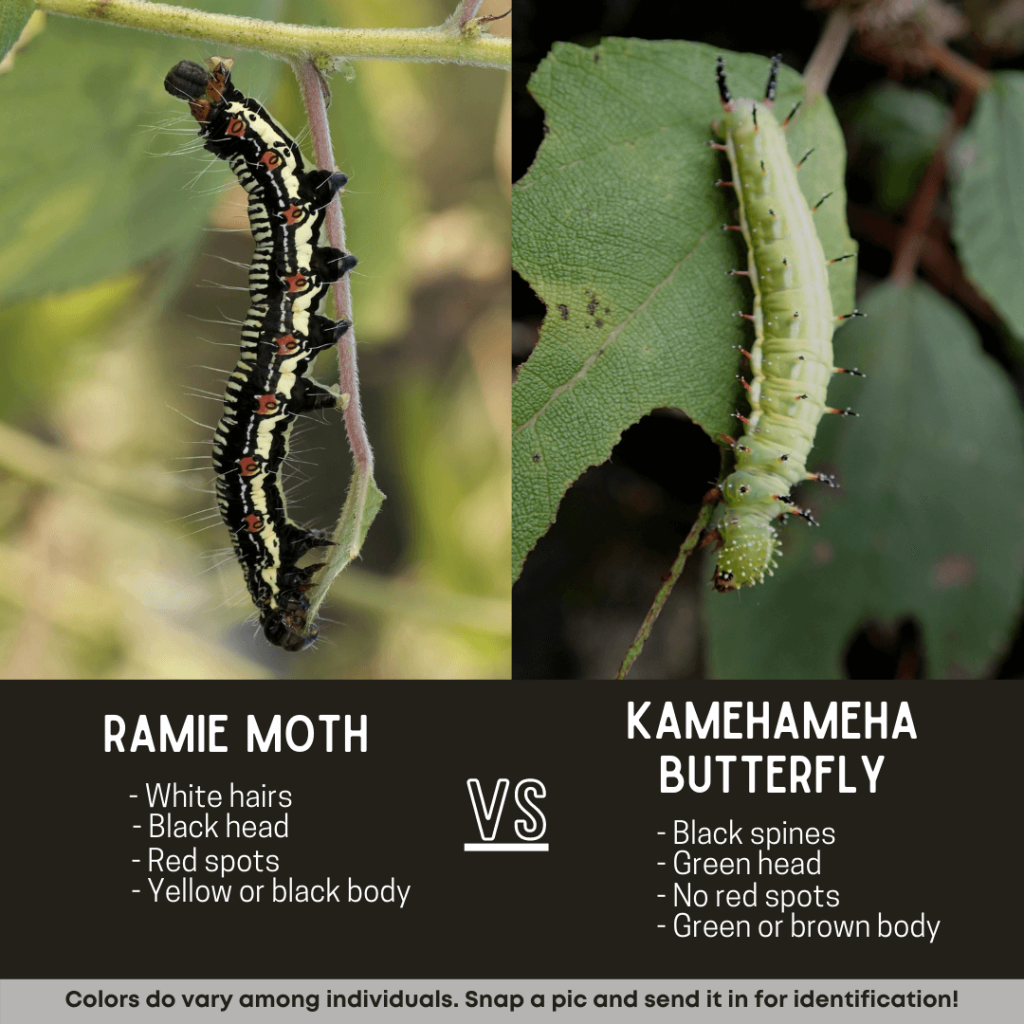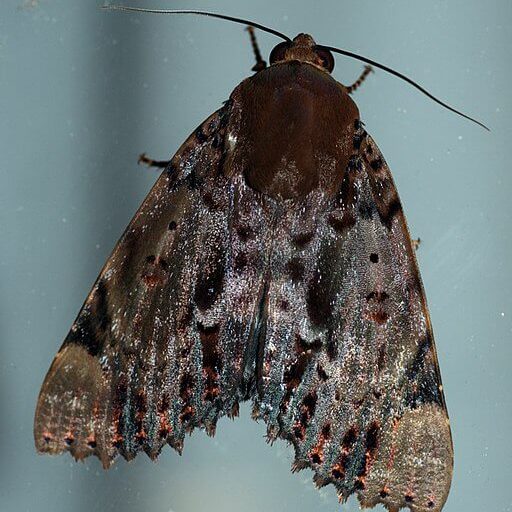
Humans have been moving plants around the world for centuries. Hawaiʻi is a prime example of just how far humans have transported plants. Many of the plants we’re accustomed to seeing in local gardens, parks, and landscapes aren’t actually native to Hawaiʻi. But just because a plant is introduced to an area doesn’t necessarily mean it falls into the “invasive species” category. In fact, many introduced species, such as ʻulu, avocado, and lychee, are an integral part of what makes Hawaiʻi special. Once a plant starts causing harm to humans or the native ecosystem, it’s looked at with more scrutiny.

Post L. hildebrandiana removal.
Take the Giant Burmese Honeysuckle (Lonicera hildebrandiana) for example. Giant Burmese Honeysuckle (GBH) has a vigorous climbing habit and requires strong support to handle the weight of the plant. In 2017, BIISC staff observed approximately 25 plants growing up several ‛ōhi‛a trees near the Kilauea Lodge in Volcano. They have been observed to have caused some limb breakage and can possibly lead to the whole tree coming down, which is particularly concerning because the fungal pathogen that causes Rapid ‛Ōhi‛a Death enters ʻōhiʻa through open wounds. When the GBH is well-established, the dense mat of vines and roots can also inhibit the growth of native seedlings. Since its population is fairly limited, BIISC staff is working to eradicate it from the Big Island.

(L) On a clear day, L. hildebrandiana leaves appear light green climbing a ‛ōhi‛a trees. (R) On an overcast day, L. hildebrandiana leaves appear darker in color as they climb through ‛ōhi‛a trees and hapu’u.
What does it take to eradicate invasive species from Hawaiʻi Island?
It can take years to fully eradicate an invasive species from the island. First, we map out the known populations and the extent of the plant’s distribution. So far, GBH has only been observed growing in Volcano Village. Its close proximity to Hawaiʻi Volcanoes National Park underscores why it’s so important to control its spread. To accurately gauge a plant’s population, we depend heavily on reports from the public because successful eradication means that every plant is eliminated. Our invasive plant response team is highly skilled and trained in various methods of plant control.
Have you seen this plant? Report it!
At BIISC, our plant control team takes a proactive approach by focusing on finding new invaders early, and removing them before they become widespread and more costly to control. Giant Burmese Honeysuckle is one of 10 eradication targets at BIISC.
Report suspected plants to BIISC at (808) 933-3340 or email at biisc@hawaii.edu.
